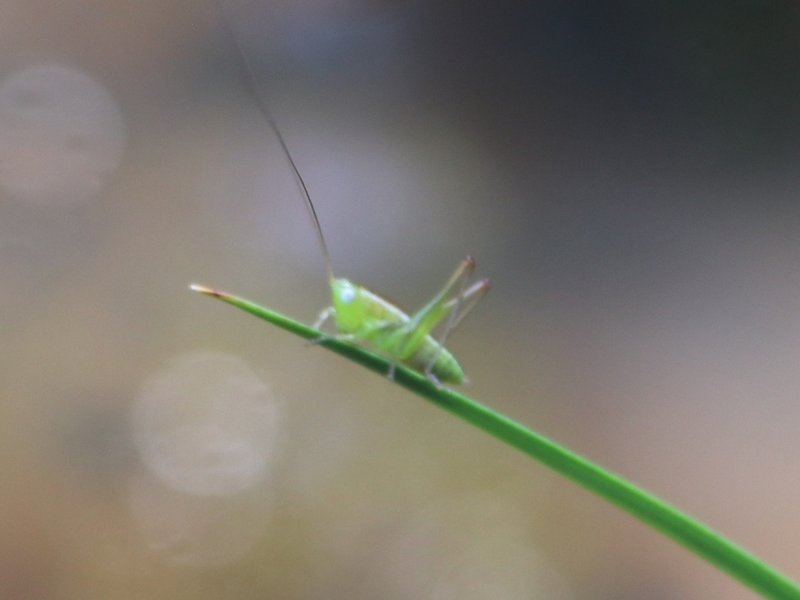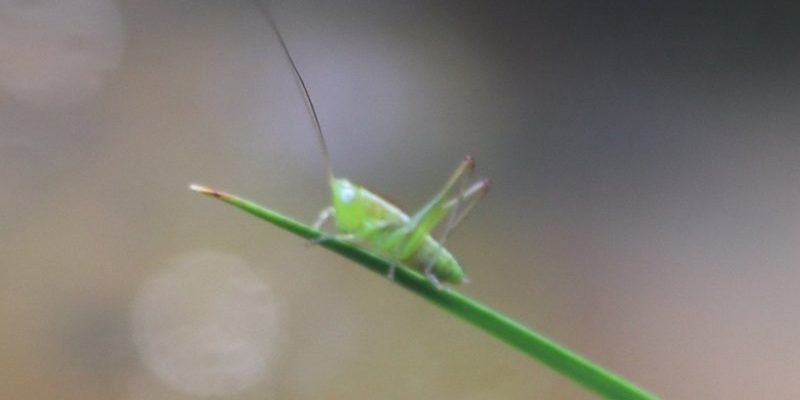
When you think of a katydid, picture a vibrant green creature that looks like it just stepped out of a lush garden. These insects, often mistaken for grasshoppers, are fascinating members of the bush-cricket family. Their incredible ability to blend in with their surroundings makes them true masters of disguise in the wild. If you’ve ever ventured into a garden during the summer nights, you might have heard their distinctive calls echoing through the air, adding a unique charm to the night.
Katydids are primarily known for their striking appearance. Most of them are green, resembling the leaves they inhabit, which helps them evade predators. They have long, slender bodies and long antennae that can often be several times the length of their bodies. This makes them not just visually captivating but also remarkable in their adaptations to the environment. You might be wondering how these insects maintain such a stealthy lifestyle while still being able to communicate so effectively. Let’s explore more about these enchanting insects.
Physical Characteristics
Katydids can be easily identified by several physical traits. As mentioned, they often have a bright green color, although some species display shades of brown or even pink. Imagine a miniature leaf dancing in the wind—that’s how well they camouflage themselves in the wild. Their bodies are flat and elongated, which contributes to their leaf-like appearance. This form helps them remain unnoticed by both predators and prey alike.
Another fascinating aspect of katydids is their size. Most species range from about 1 to 4 inches in length, but some can grow larger. Their wings are typically long and either transparent or finely veined, allowing them to blend seamlessly into foliage. They also possess long antennae, which serve as sensitive sensors for detecting movement and sounds in the environment. It’s almost like having a built-in radar system! This feature is vital for their survival, as it helps them navigate through their habitats and avoid dangers.
Habitat and Distribution
Katydids can be found in a variety of habitats, from dense forests to open fields. They thrive in warm climates, particularly in tropical and subtropical regions. However, they have a widespread distribution, present in many places outside these areas as well. You might spot them in your own backyard, especially in gardens filled with shrubs and tall grass. Their preferred environments are typically rich in vegetation, which provides not just food but also shelter from predators.
These insects are most commonly seen in North America, Africa, and Asia. In the United States, they are particularly prevalent in the eastern and southern regions. During the day, they often rest on leaves, using their superb camouflage to stay hidden. As dusk settles, they become more active, and you can hear their intriguing songs filling the night air. The different species of katydids have adapted to their local environments in unique ways, which affects their behavior and appearance.
Diet and Feeding Habits
Katydids are primarily herbivorous, feeding on a wide range of plants. They enjoy munching on leaves, flowers, and even fruits, which provides them with the necessary nutrients. Their strong mandibles are designed for chewing, making it easy for them to break down tough plant material. Imagine a tiny gardener, carefully selecting the best leaves to feast on! This plant-based diet means that katydids play a significant role in their ecosystems, helping to maintain plant health.
Interestingly, some species of katydids have been observed engaging in a bit of carnivory, munching on small insects when the opportunity arises. This flexibility in their diet allows them to adapt to various environmental conditions, ensuring their survival. They also have a unique feeding mechanism—when they nibble on a leaf, they often pick at the edges or surfaces without fully consuming them, which can keep the plants healthy. So, even when they’re feeding, they contribute positively to their surroundings.
Communication and Mating
One of the most captivating aspects of katydids is their communication. They produce a range of sounds that serve important purposes, such as attracting mates or marking territory. The males are the main performers here, using their wings to create rhythmic calls that can be heard from afar. Their songs are often described as a series of clicks or chirps, reminiscent of a natural orchestra playing in the background of a summer evening. This is essential for mating, as females are attracted to the most melodious and consistent callers.
Mating rituals among katydids can be quite elaborate. Once a female selects a male based on his song, they engage in a dance of sorts, with the male displaying his wings and body in a bid to impress her. After mating, the female will lay her eggs in moist soil or on plant stems, ensuring they have the right environment to hatch. This process ensures the continuation of their fascinating life cycle and adds another layer to their complex behaviors.
Katydids in Culture and Folklore
Katydids have made their mark not just in nature but also in human culture. In various cultures, they symbolize change and transformation, owing to their life cycle and metamorphosis. Their beautiful songs and wide-ranging habitats often inspire poems and stories, connecting humans with nature in meaningful ways. It’s as if they remind us of the beauty and complexity of the world around us, encouraging us to pay attention to the little things.
Moreover, these insects have also inspired various art forms. Illustrators and photographers often capture their striking looks and behaviors. You can find representations of katydids in books, paintings, and even children’s stories, emphasizing their role as symbols of nature’s wonders. The common nickname “katydid” itself is thought to come from the sounds they make—it’s an auditory echo of their identity, reinforcing the connection between these insects and the world we live in.
Interesting Facts about Katydids
| Size: | 1 to 4 inches long |
| Color: | Primarily green, with some species in brown or pink |
| Habitat: | Forests, fields, and gardens |
| Diet: | Herbivorous; feeds on leaves, flowers, and fruits |
| Mating Calls: | Produced by males to attract females |
| Location: | Found worldwide, especially in warm climates |
| Lifespan: | Varies; typically several weeks to months |
Conservation Status
With the ongoing changes in our environment, the conservation status of katydids can vary widely. Some species are thriving, while others face challenges due to habitat loss and climate change. Urban development, deforestation, and pollution are significant threats that can diminish their populations. As stewards of nature, it’s crucial for us to recognize the role katydids play in their ecosystems. Protecting their habitats can help maintain biodiversity and ensure that these unique creatures continue to thrive.
Fortunately, many conservation organizations are directing their efforts toward protecting insects like katydids. By creating protected areas and promoting sustainable land management practices, we can help support their populations. Engaging in community efforts to plant native flora in gardens can also contribute positively. After all, a vibrant garden can invite these lovely creatures, allowing us to witness their beauty up close.
FAQ
What do katydids eat?
Katydids primarily feed on plants. They enjoy a diet rich in leaves, flowers, and fruits. Some species are known to nibble on small insects when necessary, but they mainly rely on vegetation. This diet helps them acquire the nutrients they need to thrive in their habitats.
Where do katydids live?
Katydids can be found in various environments, such as forests, fields, and gardens. They tend to thrive in warm climates, particularly in tropical and subtropical regions. Their remarkable camouflage allows them to blend in seamlessly with their surroundings, making them harder to spot.
How do katydids communicate?
Male katydids produce distinctive sounds by rubbing their wings together, creating rhythmic calls to attract females. Each species has its unique song, and females choose their mates based on the quality of these calls. This behavior is fundamental to their mating rituals and social interactions.
How long do katydids live?
The lifespan of katydids varies depending on the species and environmental conditions, typically ranging from several weeks to several months. Factors such as food availability and habitat quality can influence their longevity.
Are katydids harmful to plants?
While katydids feed on leaves and plants, they typically do not cause significant damage. Their feeding habits can actually help maintain plant health as they often nibble without fully consuming the leaves. This allows plants to continue thriving while also supporting katydid populations.
Can katydids fly?
Yes, katydids can fly! Their long wings are adapted for flight, allowing them to escape predators and find new feeding grounds. However, they often prefer to stay close to the ground or in vegetation, using their camouflage to remain hidden.
How do katydids reproduce?
After mating, female katydids lay their eggs in moist soil or on the stems of plants. The eggs will hatch into nymphs, which resemble miniature adults. This process ensures that the next generation is born into a suitable environment where they can grow and thrive.
Are katydids the same as crickets?
While katydids and crickets share some similarities, they are different insects belonging to distinct families. Katydids belong to the Tettigoniidae family, while crickets belong to the Gryllidae family. Their sounds, physical characteristics, and behavior also differ significantly.
Do katydids have any natural predators?
Yes, katydids face a variety of predators, including birds, reptiles, and small mammals. Their excellent camouflage helps them avoid detection, but they can still fall victim to predation. This constant struggle highlights the delicate balance of life in nature.
How can I attract katydids to my garden?
To attract katydids to your garden, consider planting native plants and creating a lush, green environment. They are drawn to areas with plenty of foliage and shelter, so incorporating ornamental plants can help. Avoid using pesticides, as these can harm both katydids and their food sources.
What do the different calls of katydids mean?
Katydids produce various calls to communicate with one another. Males use specific songs to attract females or establish territory, while females may respond with their own calls. The quality and frequency of these songs can indicate a male’s fitness and suitability as a mate.

